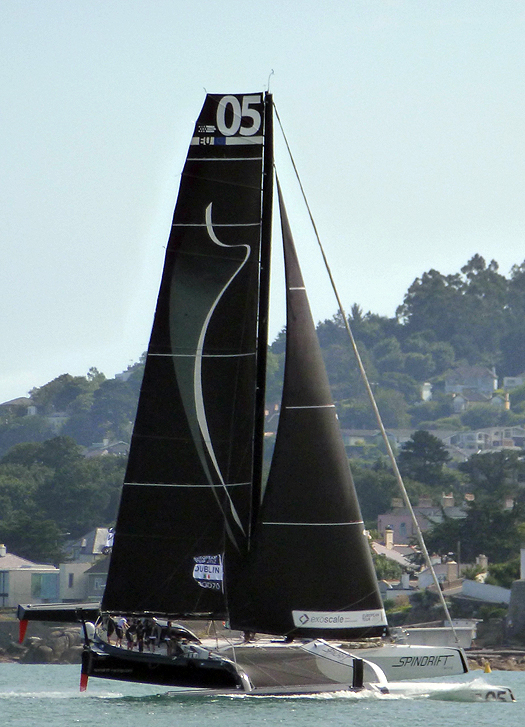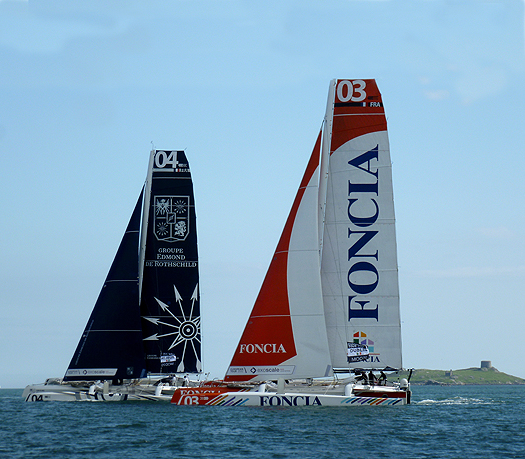#sailing – Time was when mid-September saw sailing clubs making the final arrangements for their special end-of-season events, while boats based in the less-sheltered anchorages were already being hauled out to comply with insurance restrictions in face of the approaching equinoctial gales.
Most years, we don't get gales at the equinox. And strict scientific meteorologists like Evelyn tell us there's no such thing. But if there happens to be a big breeze of wind a week either side of September 21st, the rest of us still think it's the equinox in all its traditional power, so we cling to our superstitions.
In fact, the more conservative used to close in the limits even earlier. Down in Crosshaven, some old sages used to reckon you shouldn't have your boat west of the Old Head of Kinsale after August 15th. And up on Belfast Lough, it was once thought the height of folly to contemplate a cruise to the west coast of Scotland after the end of July.
But the upside-down summer of 2012 has knocked tradition even further astray. And much-improved harbours enable us to take advantage of a longer season. This is essential, for although sailing may struggle like other minority sports for its share of public attention, the annual programme grows by the year, and we'll look back at 2012 as a year in which the shoulders of the Irish season provided many of the highlights.
Of course the Olympics plumb in the middle of it all dictated the timing of other events. But you'd have been greeted with derision if you'd suggested to the sailors of two or three decades ago that late August 2012 would see a hugely successful Tall Ships Festival in Dublin, followed in September by the sun-filled, fun-filled visit to Dun Laoghaire of the utterly mind-blowing global sailing equivalent of Formuula One.
Then those sailors of yore would have declared you crazy if you asserted that, immediately afterwards, a week of racing for one of sailing holy grails - the Dragon Gold Cup - would get under way in Kinsale, for didn't you know boy, down towards the Old Head of Kinsale in mid-September, it's WINTER?
Admittedly the crack fleet of 60 International Dragons drawn from fleets worldwide racing at Kinsale have been experiencing quite rugged conditions, and at least one noted superstar, multi-talented legend Lawrie Smith, has seen a knee injury on Day One cramp his style.
Well, only slightly – he's right in there as a contender for the Cup. Yet he gets off the boat with crutches, so doubtless a parrot will be in place on the Smith shoulder by today. And they're rooting for him in West Cork – he lists his club as Glandore, where he has strong family holiday links going back to 1966.
The Dragon sailors would rather have a fresh breeze than a flat calm, and typically of this upside-down summer conditions are becoming warmer as the week progresses. At the sharp end of the fleet it's wide open with helms from half a dozen nations in contention, Long John Silver from Glandore among them.
THE MIGHTY MODS
As for the five MOD 70 trimarans which wowed the sailors of Ireland last weekend in Dublin Bay, they too have been finding the weather getting warmer, but then their course was south towards Cascais in Portugal after "a quick little loop" to take in the Fastnet Rock. Surprisingly, they'd smooth seas approaching northwest Spain, and good speeds above 20 knots, but once again the finish was a nail-biter in light airs, with Yann Guichard in Spindrift taking the win ahead of Foncia (Michel Desjoyeaux), and Oman (Sidney Gavignet) third. Overall, Spindrift leads by one point from Foncia, with Groupe Rothschild third.

Current overall leader in Portugal Spindrift flies her main hull in Sandycove
So mind-blowing were the MOD 70s that we take a second look at them this week in the photo department. Because they're so completely enlarged versions of smaller cutting edge racers, at times you lose a sense of scale – their sheer size is not immediately evident. But then there's the noise of huge power being released as sheets are eased, and you're in no doubt about the massive loads involved in getting top performance out of boats which manage to weigh no more all-up than the total keel weight of a Volvo 70.
Everything about them is style, even if it's mistaken perception. See them blasting to windward in a good breeze, and the first impression is that the helmsman is right at the stern, hanging onto what seems to be a steering arrangement akin to the long handle-bars of a vintage Harley Davidson. Not so. That apparently godlike steersman is actually the humblest galley slave, the furthest-aft winch grinder – the helmsman is serenely removed from the slavery of the pit, out on the wing with one of the tillers to hand.
The boats look so different from various angles that, until you've seen them sailing, you might think you're looking at pictures of two or three different machines. From off the bow, they look like multihulls have looked for some decades now, but from abeam that chopped off stern gives them a harsh functionality worlds away from traditional notions of yacht design elegance.
We're told that to some extent the dreadnought bow with aft-raked stem is a fashion thing, but other designers say that it confers real advantage. You can expect to see rooster's tails of spume flying out astern of a Mod 70, but if there's any significant bow-wave showing, the chief designer will not be best pleased – a picturesque bow-wave really is a drag.

The MOD 70s have their own elegance
Handsome is as handsome does, and a MOD 70 in perfect trim at full chat can be as beautiful a boat as you can hope to see. But whether or not this extraordinary circus can be kept on the road remains to be seen. The hull-plug for the new Volvo 65 is well under way towards completion in Italy, so already the kind of international advertising money that goes into sailing at this level is being earmarked for the next edition of the Volvo.
Then too, the MOD 70s are totally a French show. Vive la France and all that, but Francophone dominance can be limiting, though the new boats certainly made a formidable impact in the US before the record-breaking Krys Transatlantic Race in July.
Well, we'll see. But meanwhile, we have seen. For those who had a hint of a notion of what they were looking at, the MOD 70s were simply fantastic. But whether or not Joe Public, ambling along the front or the pier at Dun Laoghaire and getting the occasional glimpse of incredible machines flashing by, was suitably impressed, is something else altogether.
CORK AT CONNACHTS NEAR CROKER
With Galway much in evidence at Croke Park last weekend, perhaps it was right and proper that the curious staging of the International Optimist Connacht Championship should take place just down the road on Broadmeadow Water at Malahide, but with 130 boats turning up, the young helms weren't going to let geographical nit-picking get in the way of sport. Cork dominated the results, flooding the lead places in all divisions, with Douglas Elmes winning the seniors and James McCann the juniors.
And last month in Howth, junior sailors in the 420 Nationals also saw Royal Cork setting the pace with a runaway win by Patrick Crosbie and Grattan Roberts. So already the bruising experiences of the Cork hopes in the Olympics can be put astern - there's a whole new wave of top talent coming along.
































































